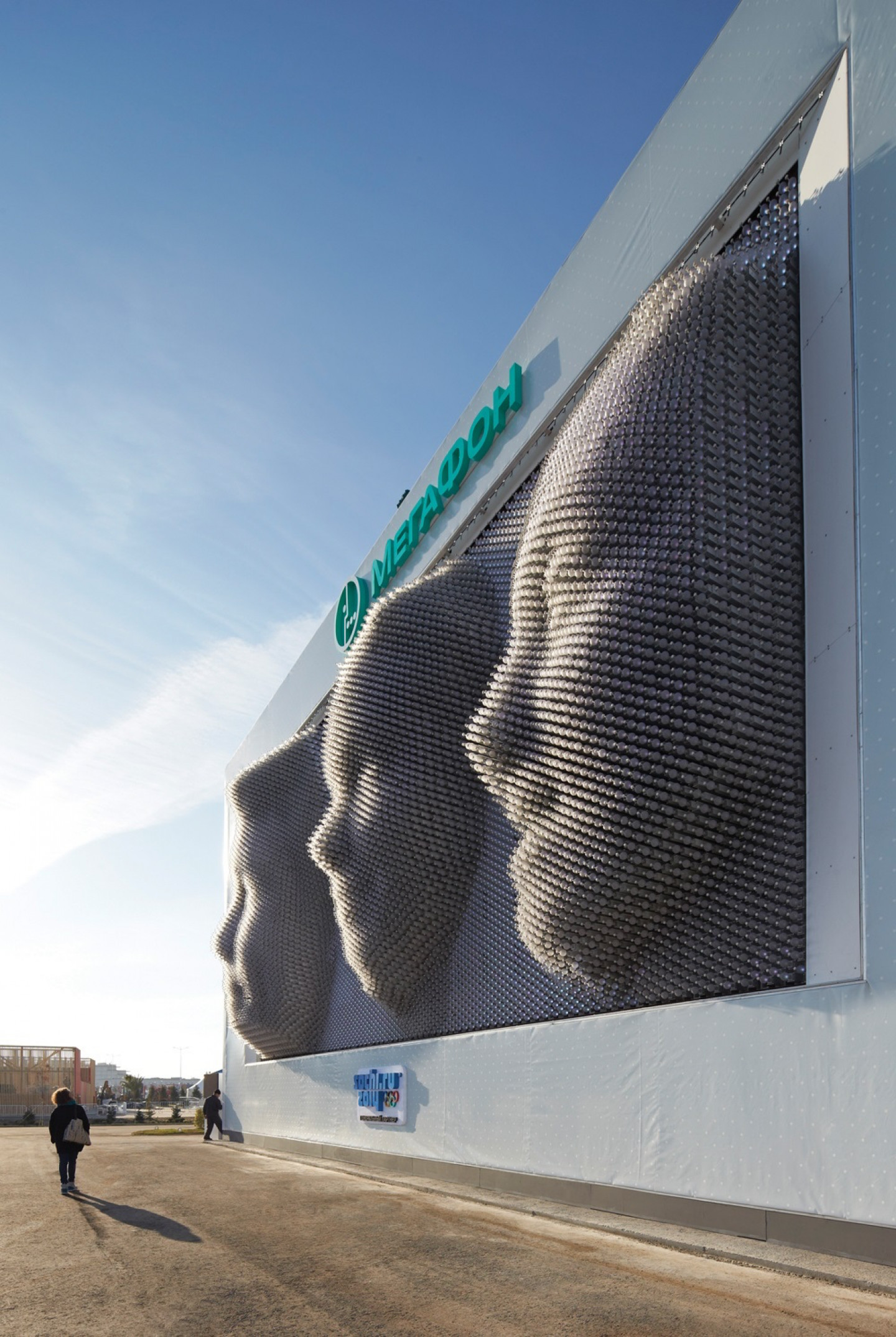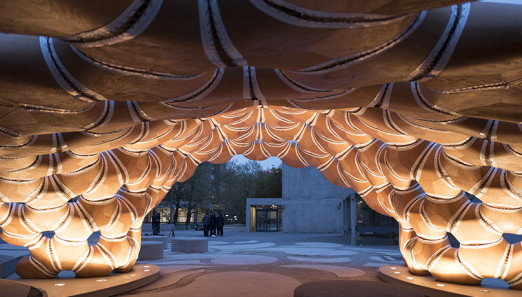A new book offers a window on a radical new blend of architecture, engineering and science

Both editors of Hypernatural teach at the University of Minnesota’s School of Architecture (Braine Brownell is Associate Professor and Director, Master of Architecture Program. Mark Swackhamer is Associate Professor and Head of School), and their research and teaching interests exploring emergent materials, complexity, and bio-inspired systems in architecture are reflected in the books imaginative diversity of work.
They sketch out the relationship of technology and the Hypernatural in their intro, “The ultimate aim of technology is not antinatural; it is hypernatural. It involves working directly with natural forces and processes – rather than against them – in order to amplify, extend or exceed natural capacities.” The examples in the book serve to complicate the distinction between the artificial and the natural, and they cite the examples of scientists “crafting” (interesting process for a scientist) photosynthetic cells made from trees to architects designing structures mimicking the dynamics of plant life.
The book breaks down Hypernatural building into seven sections capturing different spaces, processes and materials: Geosphere, Atmosphere, Hydrosphere, Microbial Biosphere, Botanical Biosphere, Zoological Biosphere, Noosphere.
If any of these categories seem forbiddingly strange, the value of this book is the clarity with which it breaks down this burgeoning field of bio-materialism and highlights the ecology of buildings and spaces in ways that are more than metaphors. Hypernatural is a really useful resource. And perhaps as the idea of sustainability tired, and was displaced by ‘resilience’ as the dominant eco-idea, Hypernatural may give new impetus to an idea of sustainability that seemed reactive and conservative rather than adaptive and creative.
This is a really useful primer, the authors don’t assume any prior knowledge of the area, just a curiosity that encourages the readers to pay attention to scientific process. And while the book is clearly driven by recent theoretical debates, it doesn’t let these complicate clear expositions of vital and new ways of thinking about architecture, engineering and environment.
John O'Reilly
Hypernatural by Blaine Brownell and Marc Swakhamer, published by Princeton Architectural Press, £15.99
Here are five of our favourite projects.
1. Bloom, Los Angeles, DOSU Studio Architecture, 2012.
Designed by architect Doris Kim Sung the structures bimetal composite skin shifts its shape in response to temperature changes, resembling the solar-responsive processes of plants.

(© DOSU Studio Architecture)
2. BIQ House Hamburg, Splitterwerk Architects and Arup, 2013.
The world’s first bio-adaptive façade, the BIQ House (Bio Intelligent Quotient) is composed of “microbe-infused glazing panels, the system utilizes living microalgae to harvest solar power while providing shade.”

(© Colt/ Arup/ SSC)
3. Geo-Tube Tower, United Arab Emirates, Faulders Studio 2009.
Salt deposits, left behind from high-saline seawater pumped through pipes up the building as the water evaporates, form a thin crusty skin. This then also becomes a useful habitat for local wildlife. Aside from the soothing mystery of its façade the authors argue that its most important contribution to debates around fabrication is the idea that, “a building can be minimally scaffolded with imported materials early in its life cycle, then completed later through an automated process of locally harvested materials.”

(© Faulders Studio)
4. Radiant Soil, Paris, Philip Beesley, 2013
Canadian Architect Philip Beesley’s project shown in the Alive/Envie show at the Espace EDF Fondation in Paris, it responds in real-time to the movement of people lighting up its “LED-lined arteries, moving its biomechanical fronds to generate air currents and releasing unique odors into the air through its scent-emitting glans.” This is biological in the sense of biology as a process, and the authors argue expands the sensorial expression of architecture (smell, texture, movement) we experience in other surroundings.

( © Philip Beesley)
5. Dune City, Prototype (Sahara Desert), Ordinary Vis, 2008
Though 7 years old the thinking behind this speculative proposal still feels like its arrived form the future. Architect Magnus Larsson proposed to reduce desertification by seeding sand with the sand-solidifying microbe Sporosarcacina pasteurii. By calcifying the sand through combining it with urea the sand is eventually, “transformed into sandstone, making a much more solid terrain on which protective vegetation may be planted.”

(© Ordinary Ltd / Magnus Larsson & Alex Kaiser)

